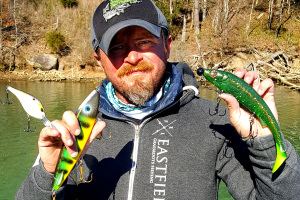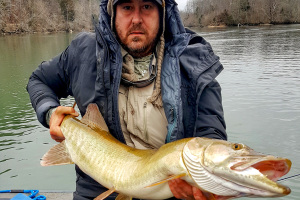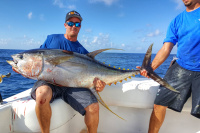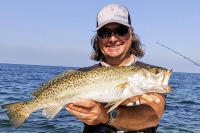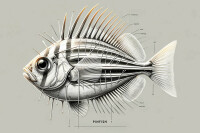Tackle failure is common in musky fishing, leading to costly losses. To avoid this, use the right fishing line, quality leaders, sharp fish hooks, and proper tie-up. Choose braided line for baitcasters and spinning reels, invest in quality leaders, file hooks for smooth drag, and use strong knots for a successful musky fishing experience.

Big Tackle for Musky Fishing
What's the last thing you'd want to happen when a big fish is hooked? Tackle failure! Musky lures aren't cheap to say the least, so the last thing an angler would want to happen is to loose that 50 dollar lure (or 20 dollar) due to tackle failure. Let's discuss four things that can help you avoid losing lures and loosing that fish of a lifetime.
Fishing Line
Your line is critical. Most muskie anglers today use braided line when tossing lures that weigh several ounces. A good, no stretch braided line is by far the best choice. Line strength depends on what rod and reel combo you use. With baitcasters, I recommend at least 65 lb test, but I prefer 80 lb test. For spinning reels, I'd go with no more than 30 lb test. Spinning rod/reel combos are best suited for smaller lures. A good smooth drag is important when fighting a big musky on spinning equipment. If your reel is rated for up to 12lb mono line, use braided line that is the same diameter as the mono line.
Leaders
Fishing Hooks
Hooks are the last connection between you and a big fish. Most big hooks (for any big fish) are built to not bend or break. But the power of big musky fish can sometimes bend even strong hooks. Usually, the fish will get tangled on limbs and rocks, causing a hook to bend.
Sharpening Hooks
The "point" of the hook must be sharp. Some hooks come needle sharp right out of the box. Other big treble hooks need sharpening but don't overdo it. I'll explain. On open water that is free from wood and rocks you want the best, sharpest hook you can get. On the other hand, if you are constantly bumping structure such as rock or wood keep this in mind. Some big hooks will "burr" very easily. If the point of your hook is too sharp, be aware that contact with structure will blunt the tip. I usually file my hooks three swipes on each side of the hook and two swipes on the top of the hook. That's enough to put a good, sharp edge on big hooks. Practice on old hooks until you get the hang of it. Remember that a good hook set is key.
Connections
The last important thing to mention is the knot. The internet is full of information on fishing knots. I primarily use two knots that are the strongest I know of. The double improved clinch knot, and the polymer knot. Tie these knots properly and you are in business. Check your knot and line regularly, especially if you fish wood, rock, bridges, ect.
If you have good strong line, strong leaders, sharp hooks and can tie a good knot, you have all the nuts and bolts for a battle you can win! Let's face it. When it comes to musky fishing, you need to have your ducks(nuts & bolts) in a row!



